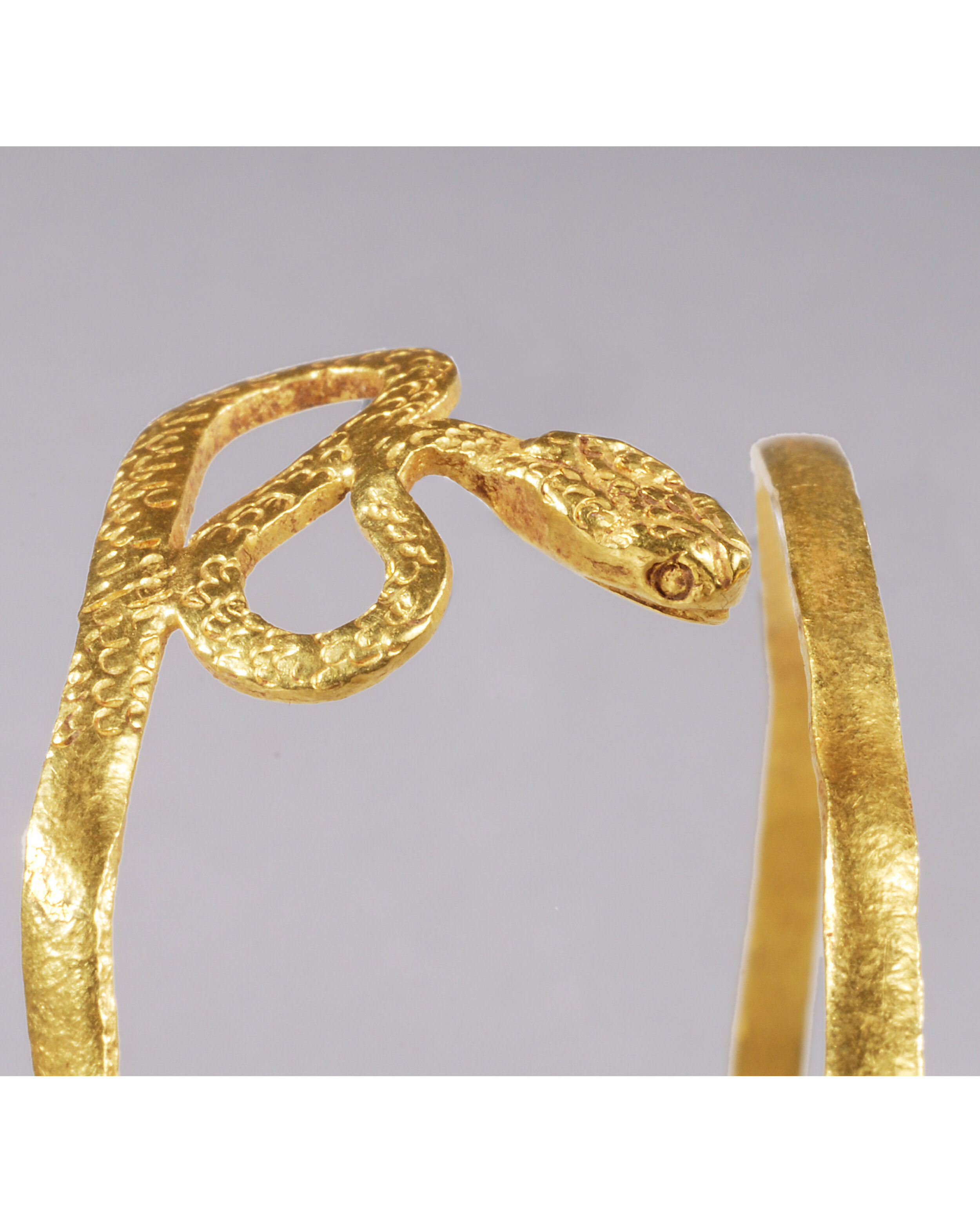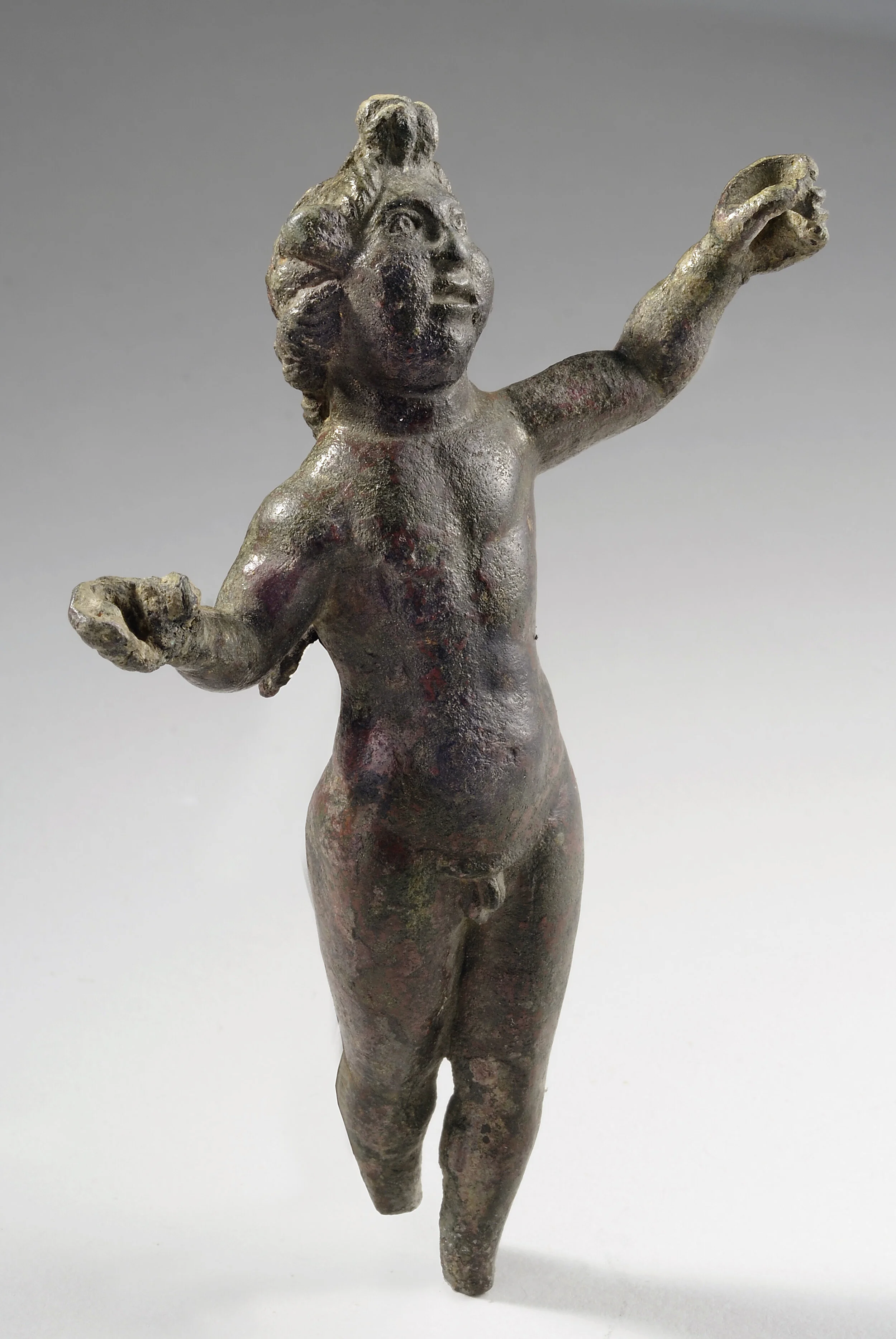Ancient Roman Gold Snake Bracelet




Ancient Roman Gold Snake Bracelet
Roman Imperial, 1st – 2nd century A.D.
Gold
D: 7.6 cm (D: 2.99 in)
Serial: 5097
The bracelet is made from a long gold ribbon wound around itself; the design skillfully transforms the shape of a simple bangle into an intricate composition of the snake’s coiled body. At one end of the bracelet is the head of the snake, at the other its tail with the volutes of diminishing size; the coils were soldered to get stability to the parts. Great care was given to the naturalistic representation of the snake, with incisions marking the scales covering the animal’s skin. In jewelry intended for women such as bracelets, armlets, earrings, and especially rings, snake representation became a very popular motif from the Hellenistic period to the beginning of the Roman Empire. Similar bracelets were produced throughout the ancient world during this period in Greece, southern Italy, Egypt, and Syria, and were also often represented in sculpture and paintings. Along with the association with the cult of several gods, snake has a strong apotropaic significance.
CONDITION
Complete; no restoration.
PROVENANCE
European private collection, acquired in 1995.
BIBLIOGRAPHY
DE JULIIS E. M. et al., Gli Ori di Taranto in Età Ellenistica, Milano, 1984, pp. 247-248, nos. 172-173.
DEPPERT-LIPPITZ B., Ancient gold jewelry at the Dallas Museum of Art, Dallas, 1996, pp. 112, 144-145, no. 99a.
Glories of ancient Greece: vases and jewelry from the Borowski collection, Jerusalem, 2001, p. 83, no. 97.
HOFFMANN H., DAVIDSON P.F., Greek Gold: Jewelry from the Age of Alexander, Mainz, 1966, pp. 174-179, nos.65-67.
WALKER S., HIGGS P., eds., Cleopatra of Egypt: From history to myth, Princeton, 2001, pp. 94-96, nos. 106-108, 111.
WILLIAMS D., OGDEN J., Greek Gold: Jewelry of the Classical World, New York, 1994, p. 114, no. 66.







